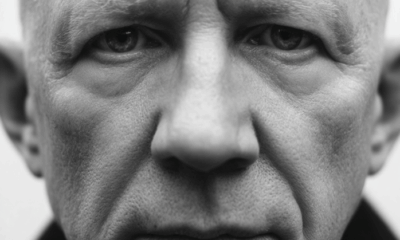Success Advice
How to Achieve More by Intentionally Doing Less
Often times when we look to achieve a certain goal, we set ourselves up for failure because we come up with these ridiculous expectations for ourselves.
“I’m going to exercise twice a day, six days a week” – even though you haven’t seen the inside of a gym in years.
“I’m going to save $10,000 in 90 days” – even though the only thing you typically save is that item on sale from being stuck on the shelf too long.
“I’m going to wake up every day at 4:30am” – even though most restaurants have stopped serving breakfast by the time you usually wake up.
Get the picture?
In no way am I saying you should avoid goals that push you, and force you to step outside of your comfort zone. But I am saying, sometimes it’s better, and more realistic, to set more conservative goals that you can actually stick to.
One way to make that happen, is to intentionally limit yourself to doing a little less than you know you’re capable of.
Let’s go back to that exercise example above.
Biting Off More Than You Can Chew
In week one, you actually go to the gym twice a day, for six days. Then in week two, you go to the gym six days, but you only make it twice on three of those days. By week three, the whole “two a day” plan isn’t working anymore.
Then, by week four, you’re not even going to the gym six days anymore. By week five, you’re lucky if you make it three days. Fast forward a few more weeks, and the gym is a distant memory.
Sound familiar? I’m using the gym as an example, but this applies to pretty much any goal you set for yourself. You start off at a ferocious pace, only to eventually burn out and revert back to your old ways.
So what’s the solution?
How do you give yourself a fighting chance to actually achieve those goals that could improve your life? Well, the answer is something you may not be expecting.
In order to achieve more, sometimes it’s better to do less.
The Theory in Action
Here’s another scenario, but in this one, you intentionally plan to do a little less.
You set a goal to workout 45 minutes a day, 3 days a week, every week, for the next year. You know on a good day, you could realistically work out for 60 minutes. And on a good week, you could workout at least 5 days a week.
But you also know that not every day is a “good day“. You understand that just because you could, doesn’t always mean that you will.
The first week, you meet your goal. The second week, you meet your goal. And the third week, and the fourth week, and the fifth…
By the end of the year, you’ve stayed consistent and totally transformed your body.
But you made sure to never work out more than 45 minutes a day, and never more than three days a week. Even if you felt you could do more.
Why would you do that? Why would you purposely restrict yourself from doing more?

Doing Less in the Short Term, Achieves More in the Long Term
The answer is simple. It’s better to do a little action, consistently, than a big action sporadically. Even though you may be limiting yourself in the short term, you’re building up your ability to stay consistent in the long term.
Working out three times a week for an entire year is better than working out six days a week for a month.
Saving 5% of each of your paychecks for year, is better than saving 15% once.
And when you force yourself into doing slightly less than your maximum ability, you increase the chances of actually sticking to whatever it is you’re trying to do.
This one, simple strategy, could be the difference between finding success in the goals you set, and constantly struggling only to fall back into your old ways of doing things.
If you’d like more of my advice you can get updates from my blog, DoReallyGood.com, where I show you how to utilize willpower, habits, systems and automation to create lasting change that leads to the achievement of your goals.
Did You Know
How Skilled Migrants Are Building Successful Careers After Moving Countries
Behind every successful skilled migrant career is a mix of resilience, strategy, and navigating systems built for locals.

Moving to a new country for work is exciting, but it can also be unnerving. Skilled migrants leave behind familiar systems, networks, and support to pursue better job opportunities and a better future for their families. (more…)
Life
10 Research-Backed Steps to Create Real Change This New Year
This New Year could finally be the one where you break old patterns and create real, lasting change.

Every New Year, we make plans and set goals, but often repeat old patterns. (more…)
Change Your Mindset
The Silent Skill That Makes People Respect You Instantly
What truly earns respect and why most people go about it the wrong way

Everybody craves respect but not everyone earns it. Some people believe that a title, years of experience, or a position of authority automatically entitles them to respect. (more…)
Entrepreneurs
The Essential Skills Every Entrepreneur Needs In 2026
Success in the digital age isn’t about luck. It’s about mastering the skills that separate dreamers from doers.

When I was 22 years old, I started my first side hustle as a ghostwriter. (more…)
-

 Change Your Mindset4 weeks ago
Change Your Mindset4 weeks agoHow to Turn Your Mind Into Your Greatest Asset (Instead of Your Enemy)
-

 Change Your Mindset4 weeks ago
Change Your Mindset4 weeks agoThe Silent Skill That Makes People Respect You Instantly
-

 Life3 weeks ago
Life3 weeks ago10 Research-Backed Steps to Create Real Change This New Year
-

 Did You Know2 weeks ago
Did You Know2 weeks agoHow Skilled Migrants Are Building Successful Careers After Moving Countries
-

 Tech3 weeks ago
Tech3 weeks agoWhat’s in a Name? How to Get Your Domain Right

























11 Comments